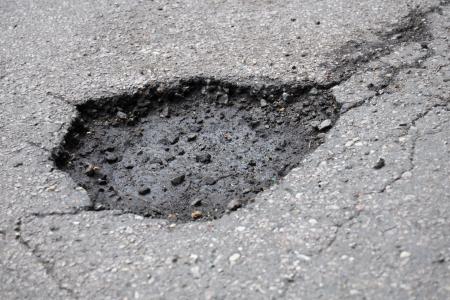Pothole Protocol

It is estimated that there are over 55 million potholes in the United States alone; potholes are natural phenomena similar to the way sinkholes form in certain areas. The Earth's crust is made of different types of bedrock, like granite, sandstone, and limestone, which is covered by different types of soil and sand, depending on the region. Regions with limestone rather than granite are more prone to sinkholes forming because limestone is a more porous stone and sometimes those pores become filled and saturated with water which slowly breaks down and erodes the sedimentary limestone until an entire area of the bedrock collapses, forming a sinkhole so quickly that they can swallow houses and moving vehicles.
Potholes are a menace to society and a huge nuisance for those who damage their cars or bones due to them, but pothole protocol dictates that potholes should be repaired quickly to stop further erosion by experienced pros like Benford Site Services LLC.
The Parking Lot Sinkhole
A pothole is essentially any dip or deviation in a paved lot or road's smooth surface. Potholes form when groundwater seeps underneath the pavement. When the water freezes underneath, it will expand, causing the pavement to swell, bend, and subsequently crack, and when the ice fully melts, gaps become present beneath the paved surface, and the asphalt collapses.
The pavement weakens further as water collects, and the erosion process repeats. Plus, when cars drive over the now weakened surface, the weight of the vehicle continues to break down the pavement even further, and pieces of the roadway may become dislodged and displaced completely. Once that happens, you officially have a pothole. A newly formed pothole can refill with water, freeze, and continue to break more asphalt, creating an even larger crater that poses an even greater risk.
Because potholes primarily form from freezing water, they generally form during the winter. However, it is not until the snow completely recedes and the ice thaws entirely that potholes become noticeable. That is why freshly formed potholes are most likely to emerge during springtime, plus the increased rain during the Low Country springtime also adds to seepage into cracks in the asphalt, which have the same eroding effect as potholes and is a good reason for drivers to be particularly cautious in the spring.
How To Stop Pothole Damage
What makes potholes so dangerous and damaging is the element of surprise: they could be a few centimeters deep to a foot-tall gorge. Worse, it is virtually impossible to visually distinguish which potholes are dangerous as you approach them. When approaching a pothole, drivers should scan the roadway ahead of them, and once you spot a pothole, you should make an effort to avoid it by driving around.
However, if you are on a crowded roadway with other vehicles around, that option may not be available, and in that case, and you may have no other choice than to go over the pothole. Try to slow down before you reach the hole, and just before your tire reaches the pothole, release the brakes; this ensures your car suspension is not compressed and your wheels do not lock up after hitting the pothole. Hopefully, this will avoid or minimize damage.
Proper pothole protocol dictates that if you are a victim of a pothole attack, you should alert the parking lot owner of the pothole's presence and suggest they contact Summerville's masters of pothole repair, asphalt sealing, and parking lot striping: Benford Site Services LLC. So when potholes form in your parking lot, call the asphalt repair and parking lot striping professional for quick response time and powerful pothole patches that persevere longer.